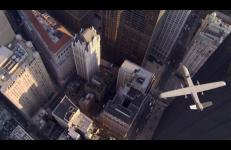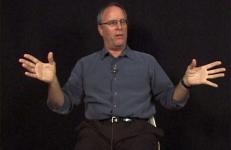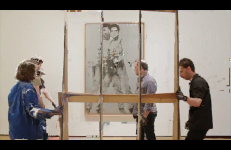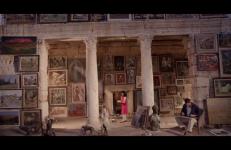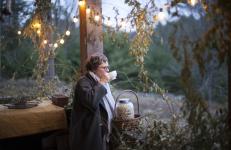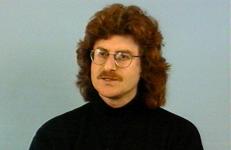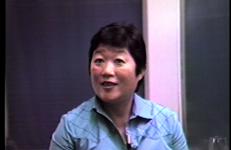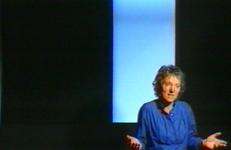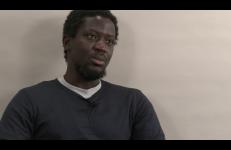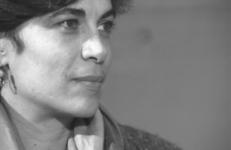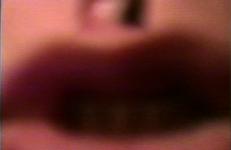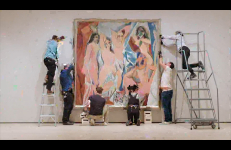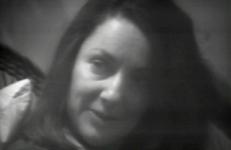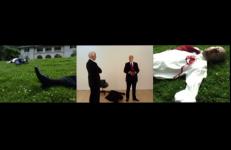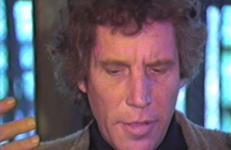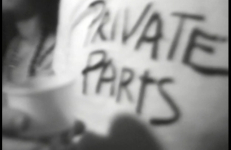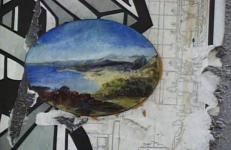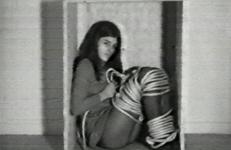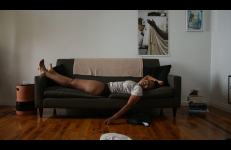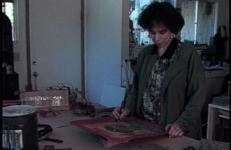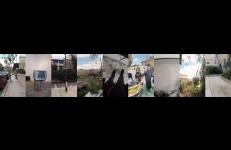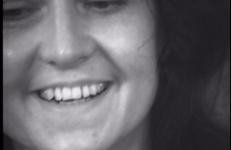Unmanned Aerial Vehicles — drones — have become an everyday feature of contemporary military activity, replacing humans in reconnaissance flights, small-scale combat missions and covert operations. The U.S. Army operates some ten thousands UAVs — a six-fold increase during Obama's term — deploying them over locations like Pakistan and Yemen.
Installation
This extensive interview with California artist Doug Hall (b. 1944) provides unique insight into the culture and politics of experimental artistic production during the 1970s. Discussing the founding of the performance group TR Uthco, Hall offers context for his contribution to the field of video art, and shares stories of his collaborations with Ant Farm, Videofreex, and others. Ranging from his early years as an art student, to his romance with artist Diane Andrews Hall, to reflections on technology in art, this interview importantly extends the discourse surrounding topics of archive, performativity, and autobiography—subjects that have come to define the contours of video art today.
This is Warhol's haunted painting and its circular detour. Oily and greasy suppuration, as well as enchanted absorption as a harbinger in times of pandemic vortex.
Museum collections of various kinds are the object of artist Dana Levy's ongoing, consistent study in the past decade.
J. Morgan Puett is an internationally renowned artist living on a 95-acre compound in the deciduous forests of northeastern Pennsylvania. Touching on ideas of creative domestication, radical pedagogy, and a critical engagement with one’s environment, Ms. Puett describes her unique home, which she calls Mildred’s Lane.
“It (J. Morgan Puett: A Practice of Be(e)ing) tells a unique story of an important artist that truly lives her art. It’s an exclusive biography of a woman who is widely known to the art world but, as yet, undiscovered by our culture.”
—Roderick Angle
Alfredo Jaar is a politically motivated artist whose work includes installation, photography and film. Born in Chile and now living in the U.S., Jaar’s socio-critical installations explore global political issues, frequently focusing on the Third World and the relationship between consumption and power. A 1988 installation in a subway station in New York involved dramatic photographs of impoverished gold miners n Brazil interspersed with quotations of current gold prices, drawing an unexpected parallel between the material desires that motivate people in both poverty-stricken Br
For Shigeko Kubota the video image-making process is a cultural and personal experience. She has explored cross-cultural relationships in her video diaries, transient images captured by portable equipment while traveling—Kubota’s “comparative videology.” She has also combined fleeting video images with the “objecthood” of sculptural form in her series of video sculptures inspired by Duchamp.
The Luminous Image was an international exhibition of video installations held in the fall of 1984 at the Stedelijk Museum in Amsterdam.
Born in 1987, Ibrahim Mahama is an artist and author who creates monumental installations out of materials originating from Ghana, Mahama's home. Described in The Guardian as "a junkyard utopian", he investigates the conditions of supply and demand in African markets, often making work with materials like cocoa and jute sacks.
Mary Miss (b.1944) is an American environmental artist who works with concepts of illusion, distance, and perception. Her site-specific work frequently uses both ancient and modern architecture as references. Miss's 1977 installation Perimeters/Pavilions/Decoys at the Nassau County Museum of Art, served as one of Rosalind Krauss's inspirations when she defined postmodern sculpture in her article, "Sculpture in the Expanded Field."
Cyclops / "monitor" / minotaur.
Note: A 20-second video loop self-portrait.
A brief glimpse of a confessional detour during a pictorial drift.
Ree Morton (1936-77) was an American artist working with large-scale mixed media installations. Her mature career was brief, extending from 1971 to 1977. However, her output and growth during these years was unusually large. This was the first of two interviews Lyn Blumenthal and Kate Horsfield conducted with Morton; the second was for the journal Heresies in 1977.
In 1988 the World Financial Center in lower Manhattan asked artists and architects to produce installations that centered on “the rapid development of the modern city and its enormous impact on how people live and work” for the New Urban Landscapes exhibition. MICA-TV produced profiles of the artists whose work was featured in the show, including Vito Acconci, Dennis Adams and Andrea Blum, Joel Otterson, Kawamata, Mierle Laderman Ukeles, Jon Kessler, Jean Nouvel, Stephen Willats, Martha Schwartz, and Haim Steinbach.
The Only Ones Left (three-channel video installation*), featuring actor Jim Fletcher, weaves film noir and mafia genre references with CEO diatribes, while also exposing the conventions of the feature film climax. The three channels of video depict all plot points of the Hollywood film climax concurrently. The channels are arranged chronologically from left to right. This simultaneity draws attention to the familiarity of the subject matter and the inevitability of the violent consequences awaiting the characters.
Dennis Oppenheim was a prominent figure in various art developments throughout the ’70s. Oppenheim moved through body/performance art and related video work to earthworks to his current large-scale “factories.” In all of his work, the transference of energy is an underlying concern.
Private Parts is a document of a police raid on an alleged pornographic photography exhibition organized by Rhode Island School of Design students and hung in the Electron Movers* gallery at 128 North Main Street in Providence, Rhode Island. The intent of the photography show was humor, but the meaning of the exhibition was misconstrued by powerful Providence citizens – who hadn't seen the show – and a police raid was the result. The night before the opening, an officer was sent to evaluate the show and, finding nothing wrong with its content, info
Public Discourse is an in-depth study of illegal installation art. The primary focus is on the painting of street signs, advertising manipulation, metal welding, postering and guerrilla art, all performed illegally. Public Discourse is about passionate artists who want their work to be seen by a wide range of people rather than be confined to the systemic structures of galleries and museums.
Public Discourse is an in-depth study of illegal installation art. The primary focus is on the painting of street signs, advertising manipulation, metal welding, postering and guerrilla art, all performed illegally. Public Discourse is about passionate artists who want their work to be seen by a wide range of people rather than be confined to the systemic structures of galleries and museums.
Public Discourse is an in-depth study of illegal installation art. The primary focus is on the painting of street signs, advertising manipulation, metal welding, postering and guerrilla art, all performed illegally. Public Discourse is about passionate artists who want their work to be seen by a wide range of people rather than be confined to the systemic structures of galleries and museums.
Two performers, Acconci and a young woman, occupy two wooden boxes in separate rooms, connected via monitor, camera, and microphone. The situation is symbolic of a vicarious and distended power relation, a relationship built through and reliant upon technological mediation. Watching her on a monitor, Acconci coaches the woman through tying herself up, urging her to pretend he is winding the rope around her legs and neck.
Syms’s 4-channel installation — avaliable through VDB as a single channel video — follows the central character (an aspiring artist also named Martine Syms) on a journey home from the dentist after receiving “laughing gas.” Mixing multiple points of view, clips borrowed from TV, as well as layers of comedy, fiction, reality, and critique, Syms’ work also delves into issues of race, culture, and representation.
This tape profiles mother and daughter artists Betye and Alison Saar. Both artists work with sculpture and installation, frequently using found objects, wood, and sheet metal to evoke sacred African-American rituals and images. Similar Differences was produced in concert with their first collaborative exhibition in a decade, Secrets, Dialogues, Revelations, which opened at UCLA’s Wight Gallery in January 1990 and toured nationally in 1992.
Strip / Musrara is part of Assor's ongoing “Strip” series, set in Jerusalem’s Musrara neighborhood. It is an attempt to create a living map that is both collective and subjective – a plurality of combined perspectives. Not a map of the exact measurements of the neighborhood, but of the experience of moving through it, together and alone, locals and strangers, intersecting and drifting apart.
Born in Los Angeles in 1933, Michelle Stuart spearheaded the use of non-traditional materials from nature in the early '70s, and has produced and exhibited her work internationally.




